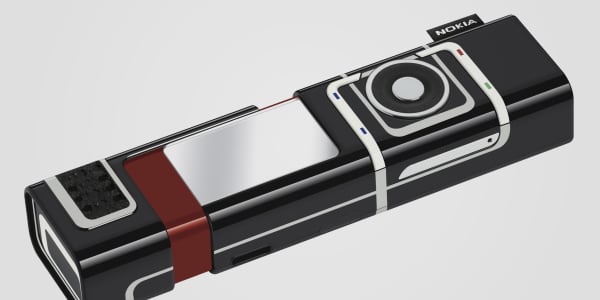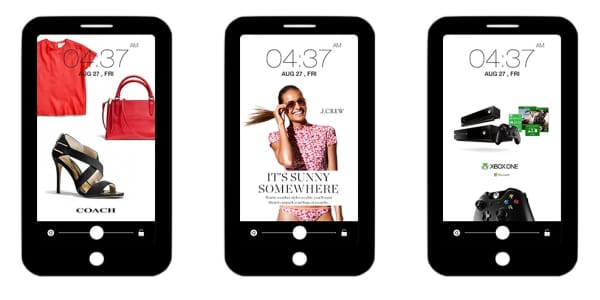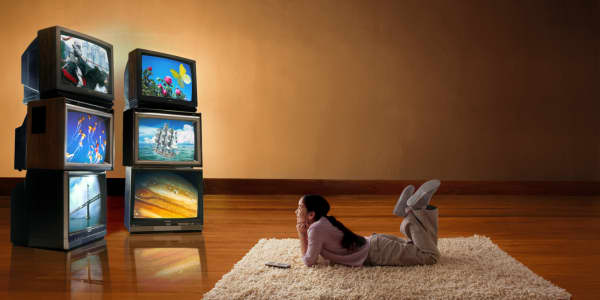Frame and fortune: Apps for the Google Glass
The next phase in mobile apps will soon be upon us as developers set their sights on wearable technology.
By 2017, mobile apps will have been downloaded more than 268 billion times, generating revenue of more than $77 billion and making them one of the most popular computing tools for users across the globe, according to research by Gartner. The same research firm predicts that wearable devices will drive 50 percent of total app interactions.
(Read More: Google warns Glass users: Don't be 'creepy or rude')
Credit Suisse analysts have labeled wearable tech "the next big thing" and say the industry is set to grow from around $3 billion to $5 billion today to $50 billion within five years.
The highest-profile part of the wearable craze, Google Glass is still in development and available to "explorers" that sign up for testing. Google says its goal is to give it broader availability "down the road" with a release date expected this year.
(Read More: High-tech cops: NYPD trying out Google Glass)
The device is a wearable computer with a head-mounted display that lets users search the web, use apps and respond to spoken instructions. Despite raising privacy concerns over the device's ability to record video, developers aren't waiting for any firm release dates for Google Glass and are scrambling to design the perfect software to complement the technology.
From gaming to fitness, facial recognition to currency conversion, CNBC highlights some of the weird and wonderful apps for the device.
By Matt Clinch, CNBC.com
Posted 28 February 2013
Command your car
Enabling owners to control their high-tech car via their high-tech headpiece, GlassTesla is built by entrepreneur and developer Sahas Katta and is the the unofficial app for high-performance electric carmaker Tesla.
"I was fortunate enough to become one of the first few hundred to get access to Glass," Katta told CNBC via email.
"Around the same time frame, my father just happened to have received a call to come pick up his Model S after nearly a 1 year wait...I simply couldn't think of two more innovative pieces of technology and it was very clear that these belong together."
(Read More: Google Glass Gets GlassTesla to Command Your Car)
The app lets users see which doors are unlocked and check the car's charge level. It can also perform tasks like turning the charge function on and off, locking and unlocking doors, and opening and closing the sunroof. Users can locate their car, find the nearest charging station and remotely access the car's climate-control feature.
Katta is hopeful that the device will be just as big a hit as Apple's iPhone with a little more polish and the right price tag. He added that a lot of companies have in-house Glass apps ready to go and they'll likely announce them when Glass makes an official consumer debut.
"It's always a chicken and egg game since people won't buy Glass unless there are enough quality apps and developers won't consider building for the platform if there aren't enough customers," he said.
Mind-blowing art
New York-based artist David Datuna has teamed up KIWI Arts Group and glassware developers BrickSimple to create "Viewpoint of Billions". This art installation is a large-scale version of the Stars and Stripes which has four interactive cameras embedded into it. The cameras connect with Google Glass-wearing viewers, sending and receiving images, videos and information to them.
"It enhances the viewing experience of the artwork through audio, video, and interactive activities. The Glassware also allows your experience to be captured on video and automatically posted to social media," Det Ansinn, the founder and president of BrickSimple told CNBC via email.
Thousands were able to experience the art at the Smithsonian National Portrait Gallery in Washington this past Presidents Day weekend, after a similar outing in Miami. Ansinn said that a standalone release of the application is planned for later in the year.
Facial recognition
"Don't be a stranger," is the slogan for NameTag, an app that allows users of Glass to capture images from their live video and scan them against photos from social media and dating sites, according to its press release.
Released in December, the beta version of the app uses utilizes some of the most accurate facial recognition software in the world, according to developers FacialNetwork.com.
"NameTag can spot a face using Google Glass' camera, send it wirelessly to a server, compare it to millions of records and in seconds return a match complete with a name, additional photos and social media profiles," it said in the press release.
(Read More: Virgin Atlantic staff don Google Glass)
The technology would allow the scanning of profile photos from dating sites such as PlentyOfFish.com, OkCupid.com and Match.com, it says, and even allow users to scan photos against more than 450,000 entries in the National Sex Offender Registry and other criminal databases, it added.
"I believe that this will make online dating and offline social interactions much safer and give us a far better understanding of the people around us," said NameTag's creator Kevin Alan Tussy in the release.
Chris Jones, analyst at Canalys can see the clear benefits of this app but told CNBC that it would be seen as "a little bit creepy" despite the creativity behind its development.
Future finance
Spanish lender Caixabank has caught the wearable technology bug with an app that provides users with a branch finder based on augmented reality and a currency converter.
"(It's) one of of the world's first for this new gadget from the financial sector," the bank earlier in February.
(Read more: Can wearable tech boost business productivity?)
"The CaixaBank application will show Google Glass users, superimposed on the screen, where to find the nearest CaixaBank branch, the direction they need to travel, how far away it is and the branch telephone number in case they need to call ahead."
Meanwhile, a currency converter enables Glass to run calculations when the user activates the application and focuses the glasses on a product's price tag. The equivalent amount will appear superimposed on the screen using augmented reality, it said, with conversion to another currency.
CaixaBank says the app is "ready for use" and will be launched once Google officially opens the Google Glass application market in the United States.
Get intimate
The tender side of Google Glass? Glance was developed by three young creatives based in London and will soon be launched on the device after experimentation with the iPhone.
The project started as an exploration in using Google Glass during intimate moments, say the developers. It aims to give two people two different perspectives in the same place. A pair of users can capture two videos at the same time and watch them simultaneously, side-by-side, in an attempt to make an intimate experience more "special, surprising and delightful."
(Read more: Wearable tech: What it needs to be a game-changer)
"We were really interested in how people communicate and document their lives, this led us on to thinking about how people could experience everyday moments from two perspectives," creator Sabba Keynejad told CNBC via email. Sabba said that they have yet to confirm a release date.
In an attempt to allay concerns over privacy Glance's creators state that it doesn't host videos but uploads them to a cloud database and if users leave the app, everything disappears forever. "Your videos belong to you, not the Internet," the developers say on their website.
Don't miss the game
U.S. sports are renowned for their heavy data usage, with fans trawling through endless player statistics whilst enjoying the action. APX Labs wants to take that one step further with Skybox allowing sports fanatics access to real-time content such as replays and stats without missing a moment of the action.
"Make the stadium better than the living room," the U.S.-based firm boldly states on its website. Users can overlay graphics onto what they're watching, can watch replays and alternate camera angles but only at participating venues.
The app also adds a social media element, APX says, allowing fans to post to Facebook and Twitter and even spectators find their seats in a stadium.
(Read More: Woman fights ticket for driving with Google Glass)
"We want the experience in the arena to be every bit as data-rich and captivating as the experience viewers get at home. We think it's about time fans took their eyes off their phones during games and brought their attention back to the action in front of them," Jeff Jenkins, the CEO of APX Labs told CNBC via email.
Jenkins said that there is no formal release date as of yet, but the company is working with Monumental Sports to figure out how Skybox will roll out at the Verizon Center in Washington D.C.
Stay in shape
Race Yourself's name speaks for itself.
After tracking their usual running route with a GPS signal, the app allows joggers to live-race a 3-D avatar of themselves, their friends, celebrities, or even zombies pursuing them at their target pace. It aims to motivate "racers" to achieve their personal best using augmented reality wearable technology.
"My runs were getting boring," Alex Foster, the CEO of U.K.-based Race Yourself told CNBC via email. "It occurred to me how awesome it would be if I could find a friend who was always just a little bit slower than me so that I enjoyed the challenge but still got to win. This friend naturally did not exist but suddenly I thought back to Mario Kart and ghost racing."
The company says that it can be used on foot and by bike, indoors or outdoors. An early prototype of the app is live currently but Race Yourself won't be launching until Google Glass officially does.





